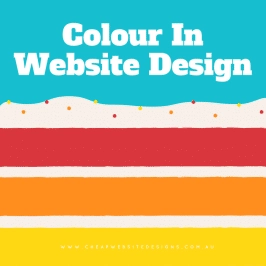Colour In Web Design

Beyond Content: The Power of Visuals in NZ Web Design (Colour, Fonts, Images)
Websites have come a long way since the internet first emerged. Initially, many creators didn’t have a clear idea of how to use visual elements effectively. The result was often either poorly designed websites crammed too full of information with poor navigation, or overly colourful websites lacking substance. While content plays a major role, key visual elements like the colour scheme are crucial in today’s effective web design.
Why Fonts Matter More Than You Think
When we talk about colour and visuals, not everyone realises that the aesthetic qualities of a webpage depend just as much on the fonts used as on the actual colours. Why? Consider a webpage where everything is written in the same font and size throughout. Honestly, even with extremely interesting content, would you know where to focus? The purpose of **bold** text is to draw attention. The same applies to underlined or italic text. They can be used for different purposes, with formatting like bullet points and headings guiding the eye – much like how headings structure this article. Find great fonts at resources like Google Fonts.
Using Photography and Images Effectively
Photography and images are another often underrated aspect of web design. Standing out today depends as much on good images as it does on well-designed buttons or layouts. Simply grabbing a random picture off the internet quickly won’t help if you want a professional result (it often screams ‘unprofessional’). Ensure photos complement the site’s colour scheme and make sure the key subject is clearly in focus. Always consider the overall aesthetic; it doesn’t work well if your whole webpage aims for simple, clean aesthetics and suddenly you drop in a jarringly colourful or stylistically different picture. Sometimes the goal might be to draw specific attention, like a photography tutorial highlighting the photos themselves (check examples on Unsplash or Behance), but always consider the overall user experience before committing.
The Details: Buttons and Logos
Who doesn’t appreciate well-designed buttons? They guide users and contribute to the overall feel. But specific styles don’t work everywhere. A cost-effective web design doesn’t have to mean a bad design. Sure, you could probably put together a web page using many automated tools available these days with little in-depth knowledge. So, what’s the difference with a professional approach? Attention to detail. Professionals ensure:
- Details are highlighted effectively (e.g., using relevant bullet points).
- Link buttons are clear but don’t overpower the main content.
- Logos are well-considered as critical branding elements.
Speaking of logos, they generally need to be simple and therefore easy to remember. PayPal and Amazon are prime examples of how effective simple logos can be. When you see them, you instantly associate them with the respective websites. Is it just high exposure? Not entirely. They created something simple and functional. Keep that principle in mind too.
The Professional Difference: Context and Execution
Colour is a powerful tool. But like any powerful tool, it needs careful handling. Always consider the context of your website, your brand, and your audience. When visual elements are chosen and executed thoughtfully, you’ll achieve better results with your web designs. Ultimately, it’s not just about ‘cheap’ vs ‘expensive’, but about thoughtful, professional execution versus carelessness.